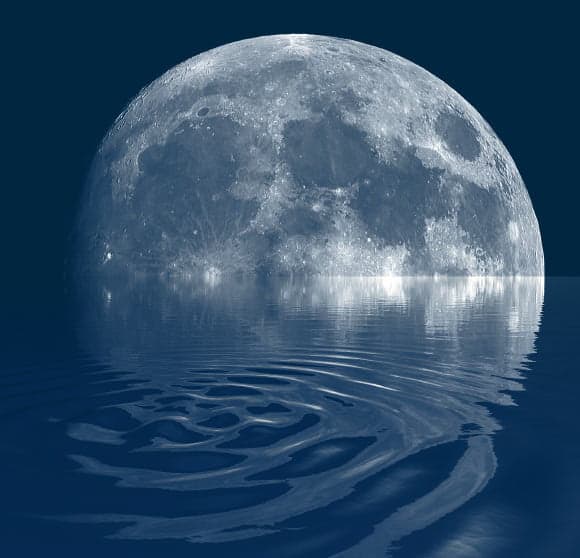
An important step toward more long-term manned missions to the moon is locating a source of water. If water is available to future astronauts on the moon, they will be able to stay much longer than if they have to carry a large amount of heavy water with them on their trip from Earth. Recent research has suggested that there could be frozen water in craters near the moon’s poles, and there may even be minute amounts of liquid water which travel across the moon’s surface. But scientists aren’t sure whether this water originates, so it’s hard to predict where it could be found.
Now, a new study has investigated the age and origin of lunar water and found it could have multiple different sources. Some of the ice deposits seem to be billions of years old, while others are more recent.
The researchers used data from the Lunar Reconnaissance Orbiter to look at craters near the south pole where evidence of water has been found. They analyzed the age of these craters and found that the ice within them could not be older than 3.1 billion years. More evidence for the age of the ice comes from the patterns of deposits, which are patchy across the floor of the crater. This suggests the deposits have been impacted by small meteorites over a long period of time.
The researchers also looked for more clues about the age of the deposits by analyzing their depth. “There have been models of bombardment through time showing that ice starts to concentrate with depth. So if you have a surface layer that’s old, you’d expect more underneath,” Brown University researcher Ariel Deutsch explained in a statement.
Most of the deposits analyzed did indeed appear to be ancient. But there were also deposits in some smaller craters with sharper edges that appeared to be more recent. “That was a surprise. There hadn’t really been any observations of ice in younger cold traps before,” Deutsch said.
These findings could help future manned lunar missions by determining the availability of resources. “When we think about sending humans back to the Moon for long-term exploration, we need to know what resources are there that we can count on, and we currently don’t know,” co-author of the study, Professor Jim Head of Brown University, said in the same statement. “Studies like this one help us make predictions about where we need to go to answer those questions.”





























